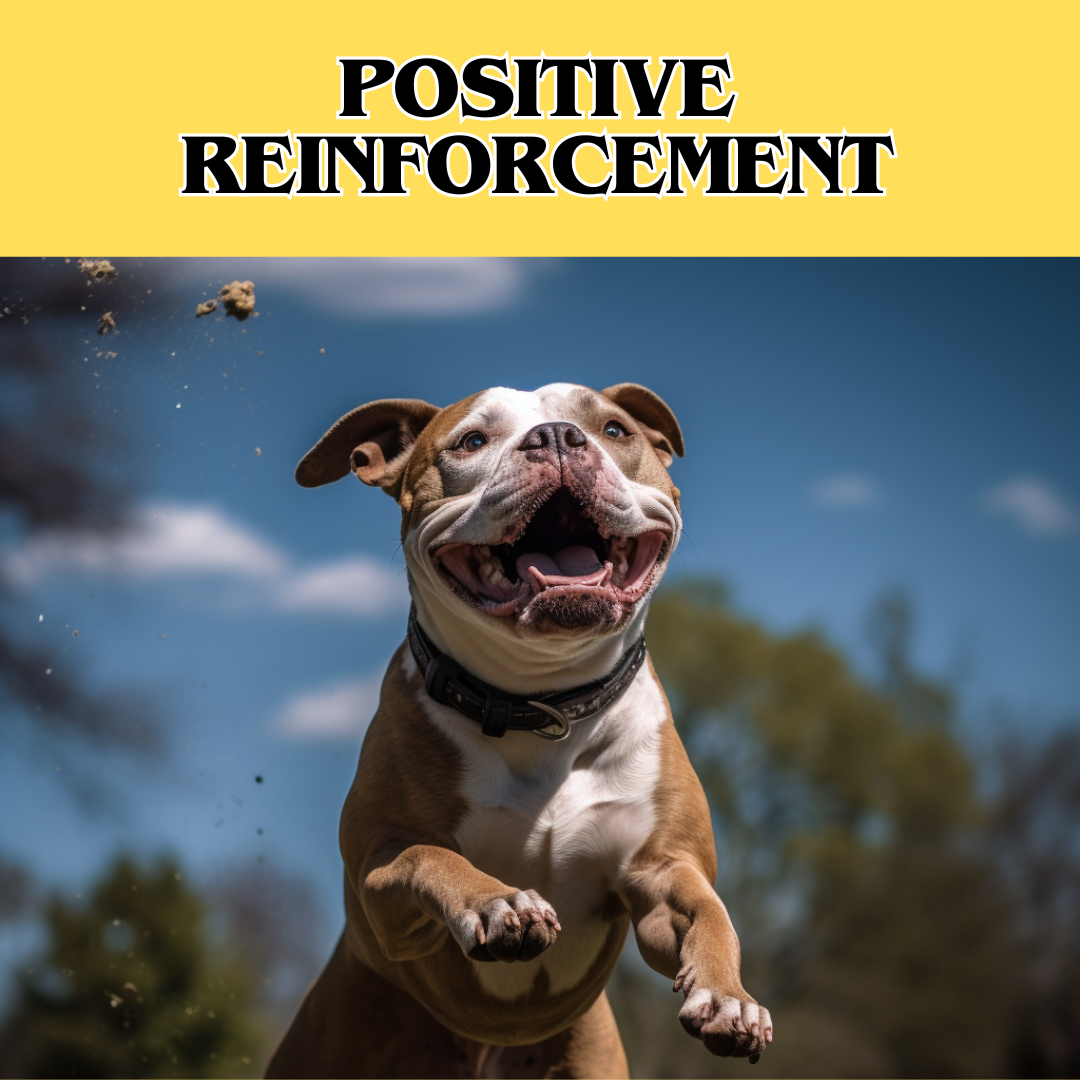Key Takeaways
| Key Point | Details |
|---|---|
| Positive Reinforcement Fundamentals | Utilizes rewards and praise to encourage desired behaviors. |
| Importance for Pit Bulls | Enhances learning and bonding, reducing misconceptions. |
| Examples of Positive Reinforcement | Treats, praise, toys, and more. |
| Implementing in Daily Training | Consistency and patience are key. |
Pit Bulls, known for their loyalty, intelligence, and affectionate nature, thrive under the guidance of positive reinforcement training. This method, centering on rewards and praise, is not only effective but also strengthens the bond between you and your Pit Bull. Through this article, we’ll explore the essence of positive reinforcement, how it applies to Pit Bulls, and practical tips for incorporating it into your training regimen, linking to insightful resources and guidance available on TheBullyHero.com.
Understanding Positive Reinforcement
Positive reinforcement is a cornerstone of modern dog training, favoring encouragement and rewards over punishment. This method is based on the principle that behaviors followed by positive outcomes are more likely to be repeated. For Pit Bulls, this approach is particularly effective, counteracting the breed’s unjust stigma and promoting a positive image.
Examples of Rewards
- Treats: Small, delicious treats can motivate your Pit Bull during training sessions.
- Praise: Verbal affirmations and petting signal approval, reinforcing good behavior.
- Toys: Favorite toys not only act as rewards but also encourage play and exercise.
- Extra Playtime: Additional time for play can be a powerful incentive for your Pit Bull.
Incorporating these rewards in training sessions emphasizes the desired behaviors, making them a regular part of your dog’s actions.
Why Positive Reinforcement is Key for Pit Bulls
Pit Bulls are eager to please their owners, making positive reinforcement particularly effective. This method also helps dismantle myths about the breed’s aggression, showcasing their capability for obedience and affection. By focusing on positive interactions, we highlight the true nature of Pit Bulls as loyal and loving companions.
Relevant resources on this topic include discussions on Pit Bull history, where you can learn about the breed’s background and its influence on their behavior today. Understanding the Pitbull temperament is also crucial in appreciating why positive reinforcement works so well with these dogs.
Implementing Positive Reinforcement in Your Training
To effectively use positive reinforcement, consistency and timing are crucial. Rewards should immediately follow the desired behavior to reinforce the connection between the action and the positive outcome. This immediate feedback helps your Pit Bull understand which behaviors are rewarded.
Steps for Effective Positive Reinforcement Training
- Identify the Desired Behavior: Clearly define what action you want your Pit Bull to learn.
- Choose the Right Reward: Different dogs are motivated by different rewards. Find what excites your Pit Bull the most.
- Reward Immediately: Give the reward right after the desired behavior occurs to reinforce the connection.
- Be Consistent: Consistency in your reactions and rewards will help your Pit Bull learn faster.
Further enhancing your training techniques, resources like basic obedience and advanced training for Pit Bulls provide detailed guidance on structuring and progressing your training sessions. Additionally, understanding Pitbull exercise needs can help in creating a balanced and happy environment for learning and growth.
Key Elements in Successful Stories
- Patience: Success doesn’t happen overnight. It requires time and persistence.
- Understanding: A deep understanding of your Pit Bull’s needs and behaviors is crucial.
- Consistency: Regular practice and consistent reward systems lead to better results.
For those looking to read more about these inspiring tales, visiting pages like Pitbulls as family pets can provide both motivation and practical advice on nurturing your relationship with your Pit Bull through positive reinforcement.
Addressing Common Challenges with Positive Reinforcement
While positive reinforcement is highly effective, trainers and owners may face challenges, such as determining the most motivating reward or maintaining consistency. It’s vital to approach these challenges with a problem-solving mindset, adapting your strategies to meet the unique needs of your Pit Bull.
Tips for Overcoming Challenges
- Experiment with Rewards: If one type of reward doesn’t seem to motivate your Pit Bull, try another. Variety can be key.
- Set Realistic Goals: Start with simple commands and gradually move to more complex tasks.
- Seek Professional Advice: Don’t hesitate to consult with professional trainers, especially for behavior modification techniques which are detailed on addressing aggression in Pit Bulls.
Understanding the link between nutrition and behavior can also offer insights into how dietary choices may impact your Pit Bull’s training responsiveness and overall well-being.
Strategies for Socializing Your Pit Bull
- Start Early: Begin socialization as early as possible to expose your Pit Bull to various environments and situations.
- Positive Social Experiences: Reward your Pit Bull for good behavior during social interactions.
- Pit Bull socialization offers guidance on introducing your dog to new experiences positively and safely.
By integrating socialization with positive reinforcement, you not only enhance your Pit Bull’s behavioral repertoire but also contribute to a more inclusive and understanding society regarding this misunderstood breed.
Empowering Your Pit Bull Through Positive Reinforcement
Ultimately, the journey of training your Pit Bull using positive reinforcement is both rewarding and enriching. It not only aids in developing a well-mannered dog but also strengthens the bond between you and your furry companion. By adopting this approach, you’re not just training your Pit Bull; you’re also advocating for the breed, challenging stereotypes, and showcasing the true, affectionate nature of these incredible dogs.
Remember, every Pit Bull is unique, and what works for one may not work for another. The key is to remain patient, consistent, and flexible in your training methods, always prioritizing the well-being and happiness of your Pit Bull.
FAQ:
Q: What is positive reinforcement in dog training? A: Positive reinforcement is a training method that uses rewards and praise to encourage desirable behaviors in dogs, promoting a positive learning environment.
Q: Why is positive reinforcement important for Pit Bulls? A: It’s crucial for Pit Bulls because it not only aids in teaching good behavior but also helps counteract negative stereotypes about the breed by showcasing their ability to learn and bond with their owners.
Q: What are some examples of positive reinforcement for Pit Bulls? A: Examples include treats, verbal praise, toys, and extra playtime. These rewards are given immediately after the desired behavior to reinforce it.
Q: Can positive reinforcement address behavioral issues in Pit Bulls? A: Yes, positive reinforcement can be highly effective in addressing and modifying behavioral issues, including aggression and anxiety, by encouraging positive behavior through rewards.
Q: How can I start using positive reinforcement with my Pit Bull? A: Begin by identifying the behavior you want to encourage, choose an appropriate reward, and consistently offer the reward immediately after the behavior. Patience and consistency are key to success.



